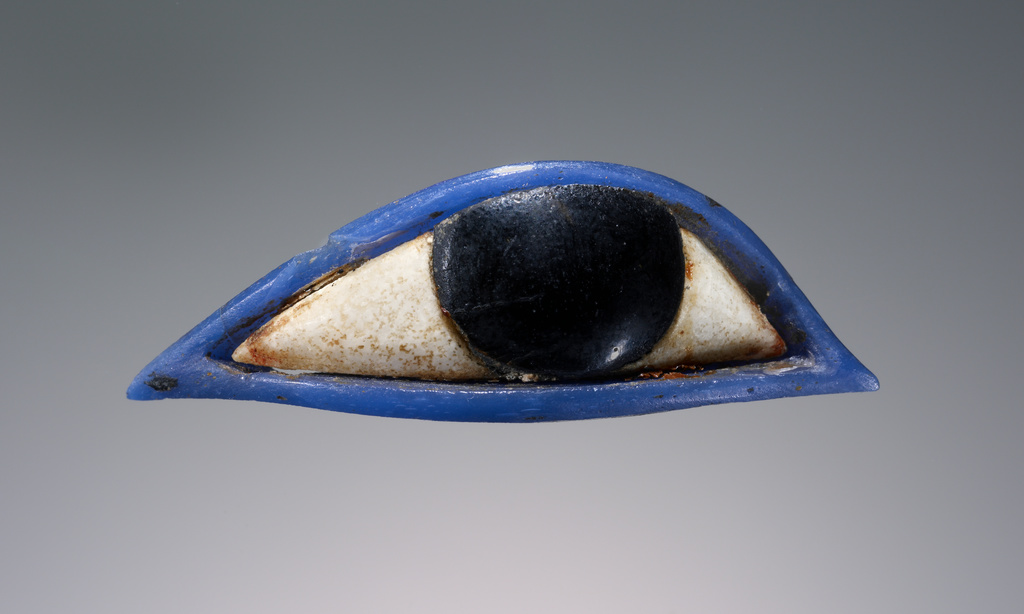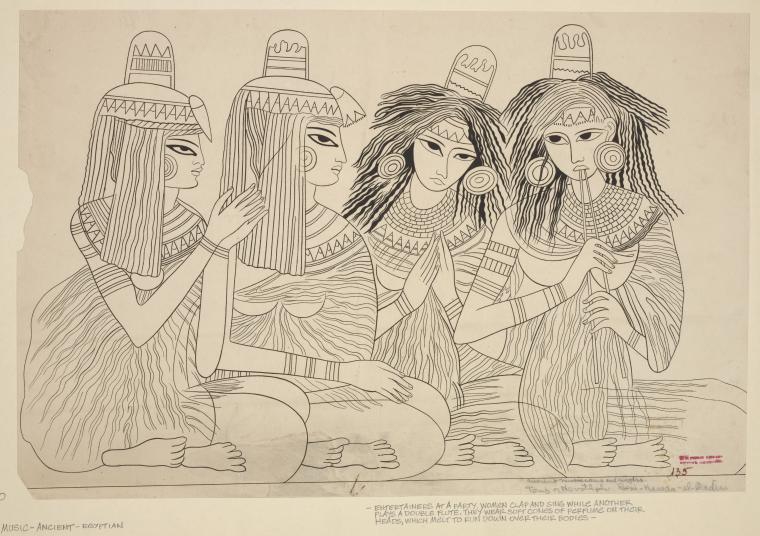Did you know that the existence of beauty products dates all the way back to 4,000 B.C.E.? In ancient Egypt, eye cosmetics were kept in cylindrical containers made out of either stone, ceramics, or wood for preservation.1 When they were first created, these eye products were used by their people for adornment reasons. However, as time went on, Egyptians developed kohl – a paste which was made up of mainly galena, a mineral form of lead sulfide. They realized this could be used for medicinal purposes as well—causing the quality and quantity of eye cosmetics throughout Egypt to increase drastically.

By 2,000 B.C.E. the accustomed eye cosmetic known as kohl was advanced drastically. Scientists have recently used a method called wet chemistry to determine this evolution.1 In addition to kohl being used to add personal sense of style to their faces, it was also a new and quite interesting source of protection. Therefore, both men and women took advantage of kohl.
At first, kohl was not used in the way we use eyeshadow today, but more like eyeliner. An extremely thick ring of eyeliner surrounded the whole eye.3 It also was not only used for beautifying purposes, but also for protection.4 Since the first kohl creation was a very dark black shade, it reflected light off of the dark pigment, protecting the eyes from harmful sun rays. Kohl was used to surround the eyes of both men and women. Simultaneously, kohl’s main ingredient, galena, was known as a disinfectant among the people of Egypt. This led the ancient Egyptian physicians to lean toward kohl as a prescribed drug for various diagnosed eye diseases.1 The Egyptians didn’t necessarily benefit aesthetically through obtaining a whole color palette of kohl. The medicinal side was extremely influential. The galena was mixed with other ingredients, including water, to create pastes of various tones. Among the most popular of these tones was a dark black and a very vibrant green.6
The deep, dark black kohl was created by the mixing of galena and soot. Soot is an extremely flaky substance that contains high amounts of carbon, which gave it the jet-black look.7 The green kohl on the other hand was made up of galena and malachite, a green pigmented rock. This rock was pummeled and mixed with the galena and water, creating a thick, vibrantly colored paste.8

Although the people of Egypt don’t use kohl the way they used to in 4,000 B.C.E., we can most certainly conclude that where we are today in the cosmetic industry would have definitely been delayed if it weren’t for the Egyptians. Their exploration of cosmetics is the base of our creams, exfoliators, and enhancers that exist on the shelves today.8
- P. Walter, et. al., “Making Make-Up in Ancient Egypt,” Nature 397, no. 6719 (Feb 11, 1999): 483-484. ↵
- P. Walter, et. al., “Making Make-Up in Ancient Egypt,” Nature 397, no. 6719 (Feb 11, 1999): 483-484. ↵
- Encyclopedia of Clothing and Fashion, 2005, s.v. “Western Cosmetics,” by Kathy Peiss. ↵
- P. Walter, et. al., “Making Make-Up in Ancient Egypt,” Nature 397, no. 6719 (Feb 11, 1999):: 483-484. ↵
- P. Walter, et. al., “Making Make-Up in Ancient Egypt,” Nature 397, no. 6719 (Feb 11, 1999): 483-484. ↵
- F.T. Walton, “My Lady’s Toilet,” Greece & Rome 15, no. 44 (May 1946): 69. ↵
- Marguerite Johnson, Ovid on Cosmetics: Medicamina Faciei Femineae and Related Texts (United Kingdom: Bloomsbury Publishing, 2016): 11. ↵
- Zoe Diana Draelos, “Overview: cosmetics and the art of adornment,” Dermatologic Therapy 14, No. 3 (September 2001): 175-177. ↵
- Zoe Diana Draelos, “Overview: cosmetics and the art of adornment,” Dermatologic Therapy 14, No. 3 (September 2001): 175-177. ↵



57 comments
Amariz Puerta
This was a great article I was really interested in the title because I really do have a passion for makeup. I thought it was so interesting that the ancient egyptians used coal as a eyeliner and now a days we buy it from the store with no problem. I love how in the article it says that it was used more than just for beautifying.
Hali Garcia
This is a very informative article. I have always been interested in learning about the history of make up and how long it has been used. I knew kohl had been used by both men and women but I did not know that it was used for medicinal purposes too. I was struck by how the Egyptians made kohl as well, I have known that some make up was made from berries but I would have never thought that it could be made of pigmented rock.
Averie Mendez
I got my cosmetology license in high school, and one of the very first things we learned about were the origins of cosmetics. The Egyptians stood out to me the most, so reading this article was almost nostalgic to me. I’m glad that you went more in depth on the ingredients of kohl than my instructors did, because I would’ve never known that it had medicinal purposes as well as cosmetic.
Ruby Wynn
Great article! I knew that ancient Egyptians used kohl around their eyes but did not know that it was used as eye protection of as medicine. I also thought that kohl was only black and didn’t know that they mixed it with other pigments to create different colors. I never thought that Egyptian makeup was for anything more than aesthetic purposes.
Nadia Carrasco
This article was very interesting to me because I never would have assumed the eyeliner Egyptians used was for protection. I find it very interesting how their makeup held purpose and meaning to them. The most interesting to me being the kohl they used to protect their face from the sun. Makeup has truly changed from back then but I can still see where we got some of our techniques from.
Mariah Cavanaugh
What an interesting article. I have never before considered the reasons for which Egyptians wore makeup. The scientific process of wet chemistry and the fact that they were able to determine the ingredients for something made thousands of year ago is amazing. How interesting that their makeup was not only cosmetic but also practical. Before we were mass producing chemicals in warehouses the Egyptians were using galena, malachite and pigmented rock.
Diego Terrazas
This article was very interesting to me because I never would have assumed the “eyeliner” Egyptians used was for protection. However, it does make sense that they would apply kohl to their eyes since they lived in an area with strong sun rays. The medicinal properties of kohl were also fascinating to read about. I wonder how it is used today, if it is used at all.
Eric Ortega Rodriguez
I knew that Egyptians used eyeliner because I would see it in movies, but I would have never guessed it was to protect them from the sun’s harmful rays or to prevent eye diseases. It is fascinating to see that eyeliner has been around for such a long time. I also found it interesting how there were different colors of kohl and that it was used by both men and women. Overall, very well written article, good work.
Victoria Rodriguez
I LOVE MAKEUP! I also love hearing about the creation of new products and why some things are used for certain areas of the face. I remember watching a documentary about a city somewhere near Egypt that still use a mixture of minerals and Kohl in their waterline due to superstitions and for the way it looks. They also be live that the mixture prevents an eye disease that causes the eyes to get dry due to the areas weather.
Kathyleen Lauriano
This article was very interesting to read. As a girl that loves makeup is fascinating to find out how it all started. I always wanted to know the reason as to why Egyptians wore the black eyeliner around their eyes, and this article did a great job explaining that. I didn’t know it was for protection from the sun, definitely learned something new. This article was great. Good job!